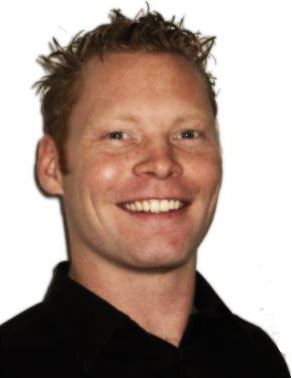a reaching hand - towards an active therapeutic device for the upper extremity following stroke
Thijs Krabben is a PhD student in the research group Biomechanical Engineering. His supervisors are prof.dr. J.S. Rietman from the Faculty of Engineering Technology (ET) and prof.dr. J.H. Buurke from the Faculty of Electrical Engineering, Mathematics and Computer Science.
 The majority of stroke survivors have to cope with permanent disability and around 85 % of these people have deficits in arm- and hand function. After stroke, rehabilitation training is started to re-learn (partly) lost functions and to achieve the highest possible degree of physical and psychological performance. The repetitive nature of rehabilitation training has led to training devices such as robotics and electrical stimulators. The aim of this thesis is to contribute to the development of a therapeutic rehabilitation robot used in post stroke upper extremity rehabilitation training. The intended use of the robot is to train both arm and hand function by actively supporting the arm against gravity and support hand opening by means of multichannel functional electrical stimulation.
The majority of stroke survivors have to cope with permanent disability and around 85 % of these people have deficits in arm- and hand function. After stroke, rehabilitation training is started to re-learn (partly) lost functions and to achieve the highest possible degree of physical and psychological performance. The repetitive nature of rehabilitation training has led to training devices such as robotics and electrical stimulators. The aim of this thesis is to contribute to the development of a therapeutic rehabilitation robot used in post stroke upper extremity rehabilitation training. The intended use of the robot is to train both arm and hand function by actively supporting the arm against gravity and support hand opening by means of multichannel functional electrical stimulation.
To be able to support hand opening, differences and commonalities of muscle activation patterns of muscles involved in reaching and grasping, were studied in a group of stroke patients and healthy elderly. For this purpose, an autonomous EMG burst detector has been developed and applied to EMG data measured in both groups. In an explorative study, the instantaneous effect of arm support and electrical stimulation on a functional movement task was assessed. Stroke patients performed the Box and Block test while the arm was supported against gravity and opening of the hand was supported by electrical stimulation.
In a longitudinal experiment, the effect of training in a gravity compensated environment on unsupported arm function was studied. Arm function was assessed before and after the 6 week training period. Arm function was assessed by a circle drawing tasks, a forward reaching task and by EMG obtained while performing these movement tasks.
Answers on the research question presented and discussed in this thesis, contributed to the development of an Active Therapeutic Device, intended to train both the proximal and distal arm after stroke. The circle metrics and the method to autonomously detect bursts of EMG and generate muscle onset and offset profiles can be used to objectively quantify upper extremity function in stroke patients. It is expected that the algorihms used in the burst detector can be easily adapted to work in real-time to detect the intention of the user and control active assistive devices.





